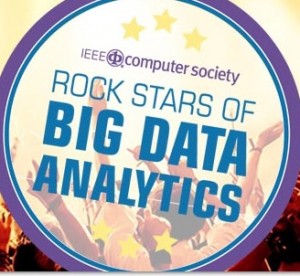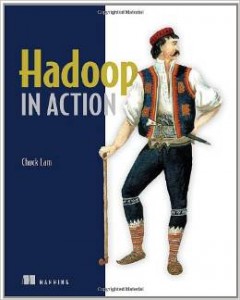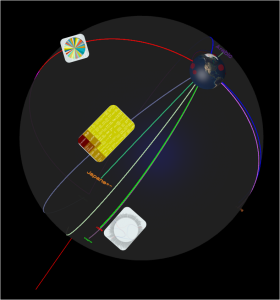 Catch me at IEEE’s Rock Stars of Big Data Analytics today. My talk is at 3:50 in the San Jose Civic Auditorium. Hmmm, music as semi-structured data…… Read the rest
Catch me at IEEE’s Rock Stars of Big Data Analytics today. My talk is at 3:50 in the San Jose Civic Auditorium. Hmmm, music as semi-structured data…… Read the rest
Tag: Hadoop
Action on Hadoop
 The back rooms of everyone from Pandora to the NSA are filled with machines working in parallel to enrich and analyze data. And mostly at the core is Doug Cutting’s Hadoop that provides an open source implementation of the Google BigTable MapReduce framework combined with a distributed file system for replication and failover. With Hadoop Summit arriving this week (the 6th I’ve been to and the 7th ever), the importance and impact of these technologies continues to grow.
The back rooms of everyone from Pandora to the NSA are filled with machines working in parallel to enrich and analyze data. And mostly at the core is Doug Cutting’s Hadoop that provides an open source implementation of the Google BigTable MapReduce framework combined with a distributed file system for replication and failover. With Hadoop Summit arriving this week (the 6th I’ve been to and the 7th ever), the importance and impact of these technologies continues to grow.
I hope to see you there and I’ll take this opportunity to announce that I am co-authoring Hadoop in Action, 2nd Edition with the original author, Chuck Lam. The new version will provide updates to this best-selling book and introduce all of the newest animals in the Hadoop zoo.… Read the rest
Hadoop World NYC
Catch me at Hadoop World 2012 in NYC, October 23-25th. I’ll be wearing a new shirt and logo.… Read the rest
Hadoop Summit 2012 and Semantic Zooming over Hadoop HDFS
Here it is:
Refresh to get the preview…… Read the rest
Semantic Zooming Demo
Semantic Zooming over Hadoop Distributed File Systems (with lenses) from Hadoop Summit 2012:
Semantic Zooming

I’ve been pushing hard for a demo at Hadoop Summit this week, waking unexpectedly at 5 AM this morning with spherical trigonometry percolating through my head. The topic is “semantic zooming” and it is not a complicated concept to understand because we have a common example that many of us use daily: Google Maps. All the modern, online mapping systems do semantic zooming to a degree when they change the types of information that are displayed on the map depending on the zoom level. Thus, the “semantics” or “meaning” of the displayed information changes with zooming, revealing states, then rivers, then major roads, then minor roads, and then all the way down to local businesses. The goal of semantic zooming is to manage information overload by managing semantics.
In my case, I’m using a semantic zooming interface to apply different types of information visualizations to data resources in a distributed file system (a file system that spans many disk drives in many computers) related to the “big data” technology, Hadoop. A distributed file system can have many data types (numerical data, text, PDFs, log files from web servers, scientific data) and the only way to interact with the data is through a command-line or through fairly simple web-based user interfaces that act like crude file system browsers. Making use of the data in the system, analyzing it, requires running analysis processes on it, then pulling the data out and importing it into other technologies like Excel or business intelligence systems to bind charting and visualization tools to it. With semantic zooming operating directly on the data, however, the structure of the data can be probed directly and the required background processes launch automatically to create new aggregate views of the data.… Read the rest